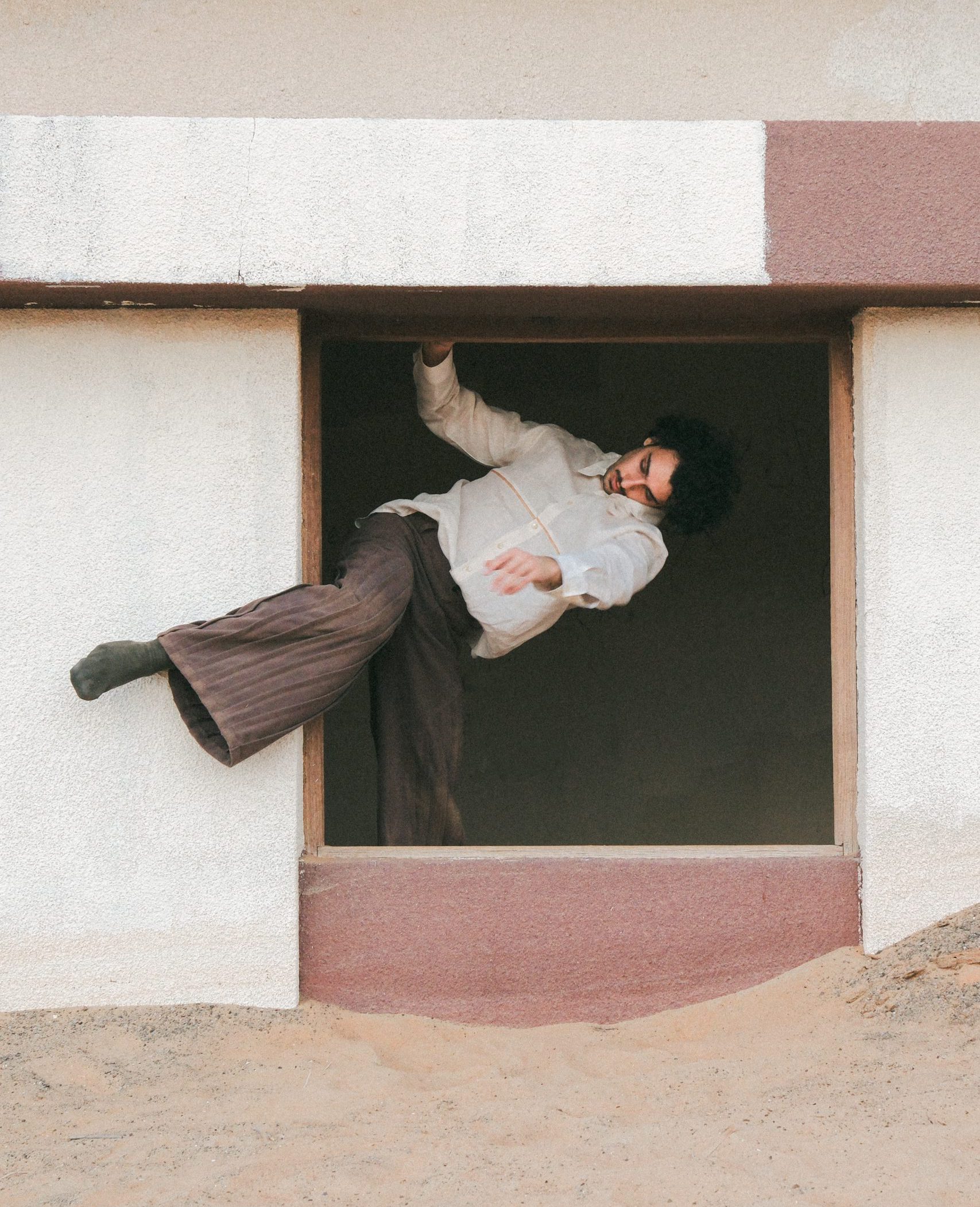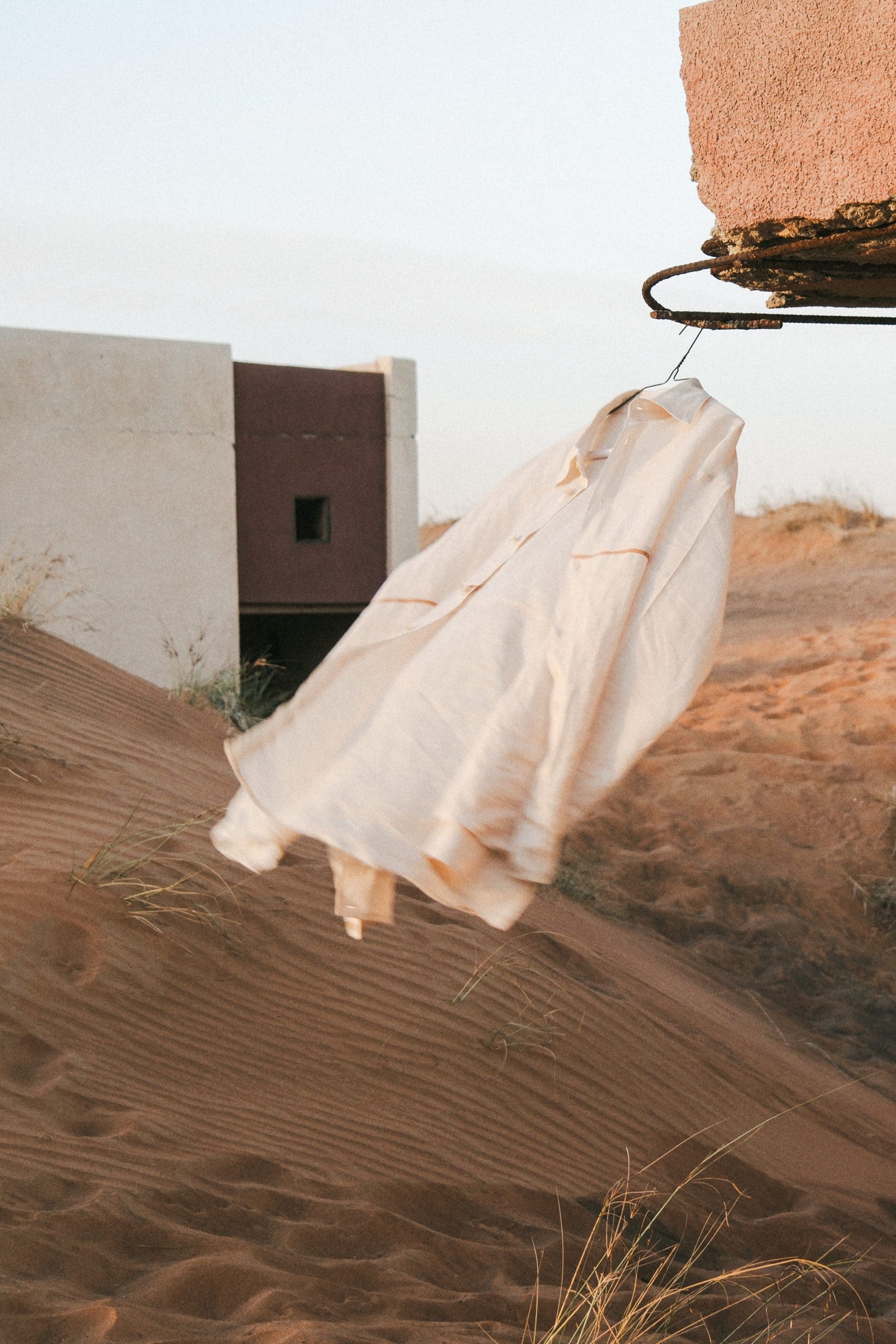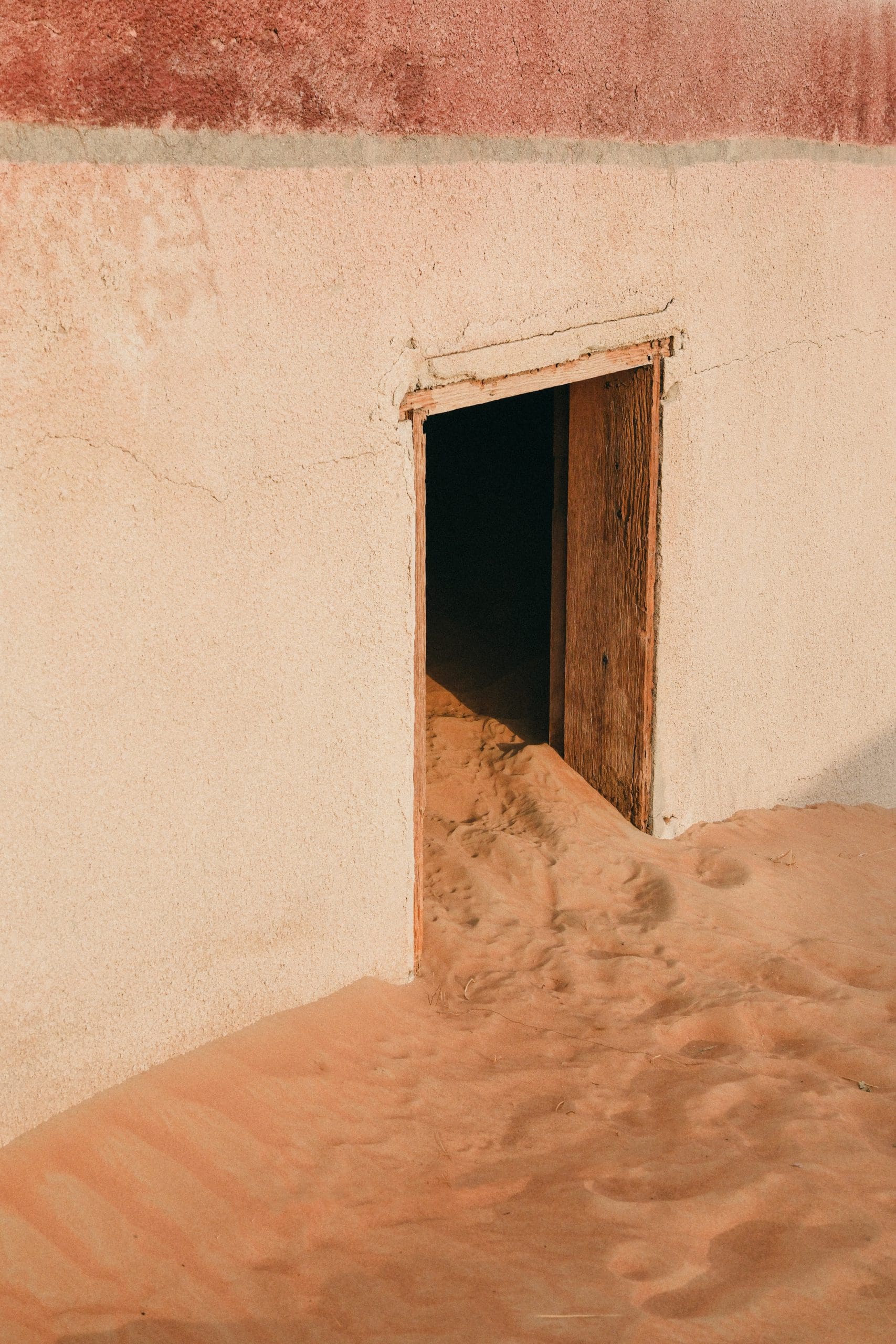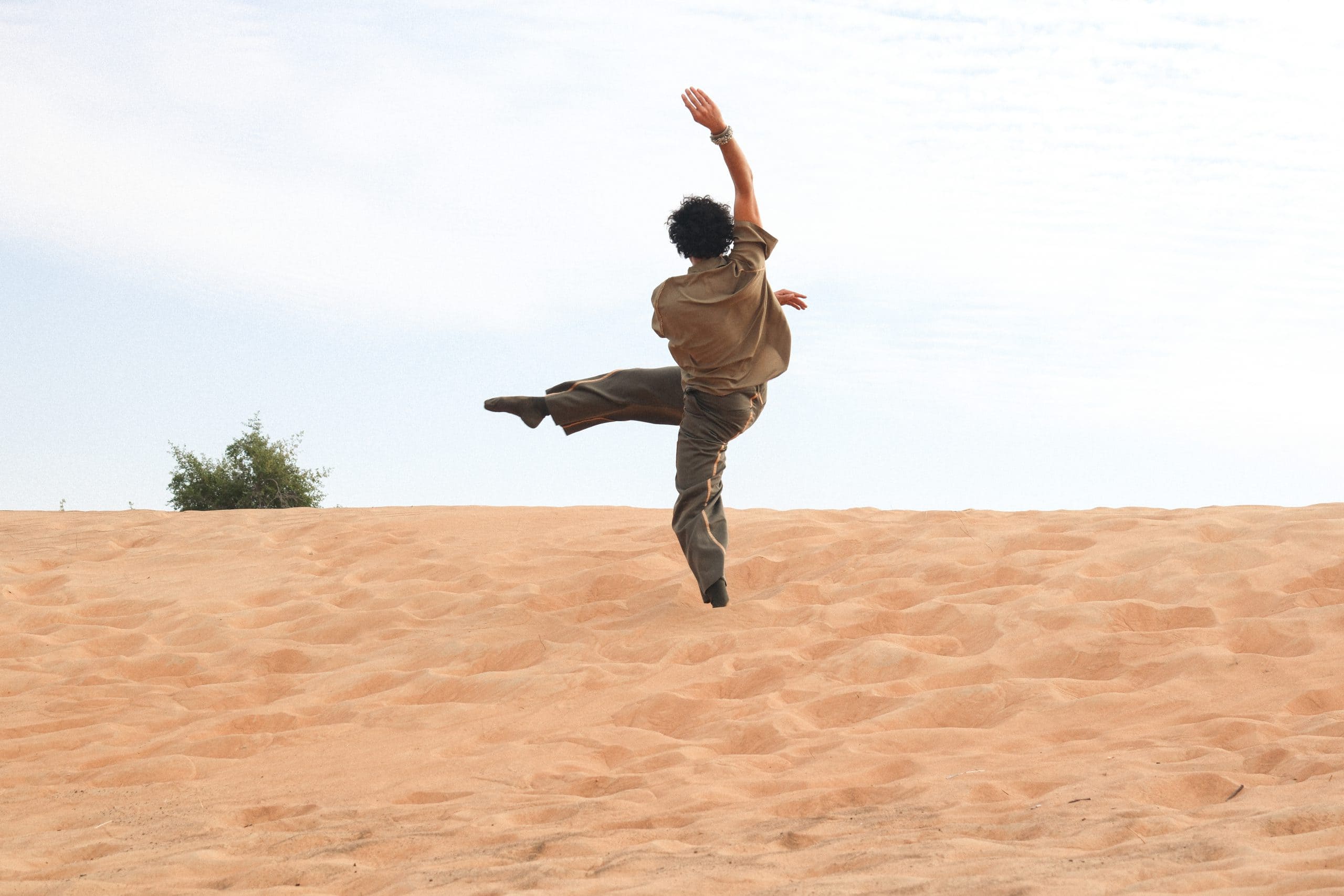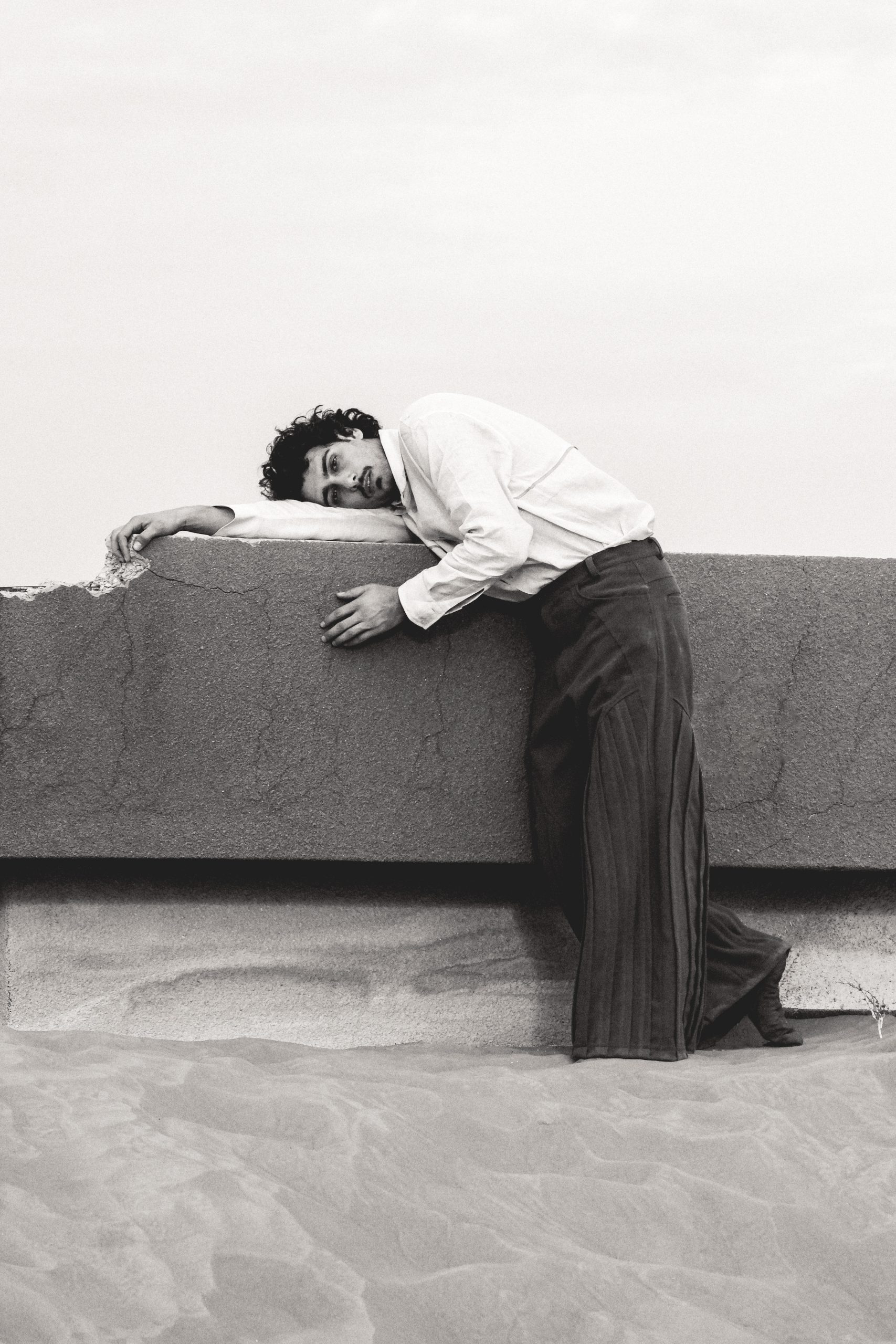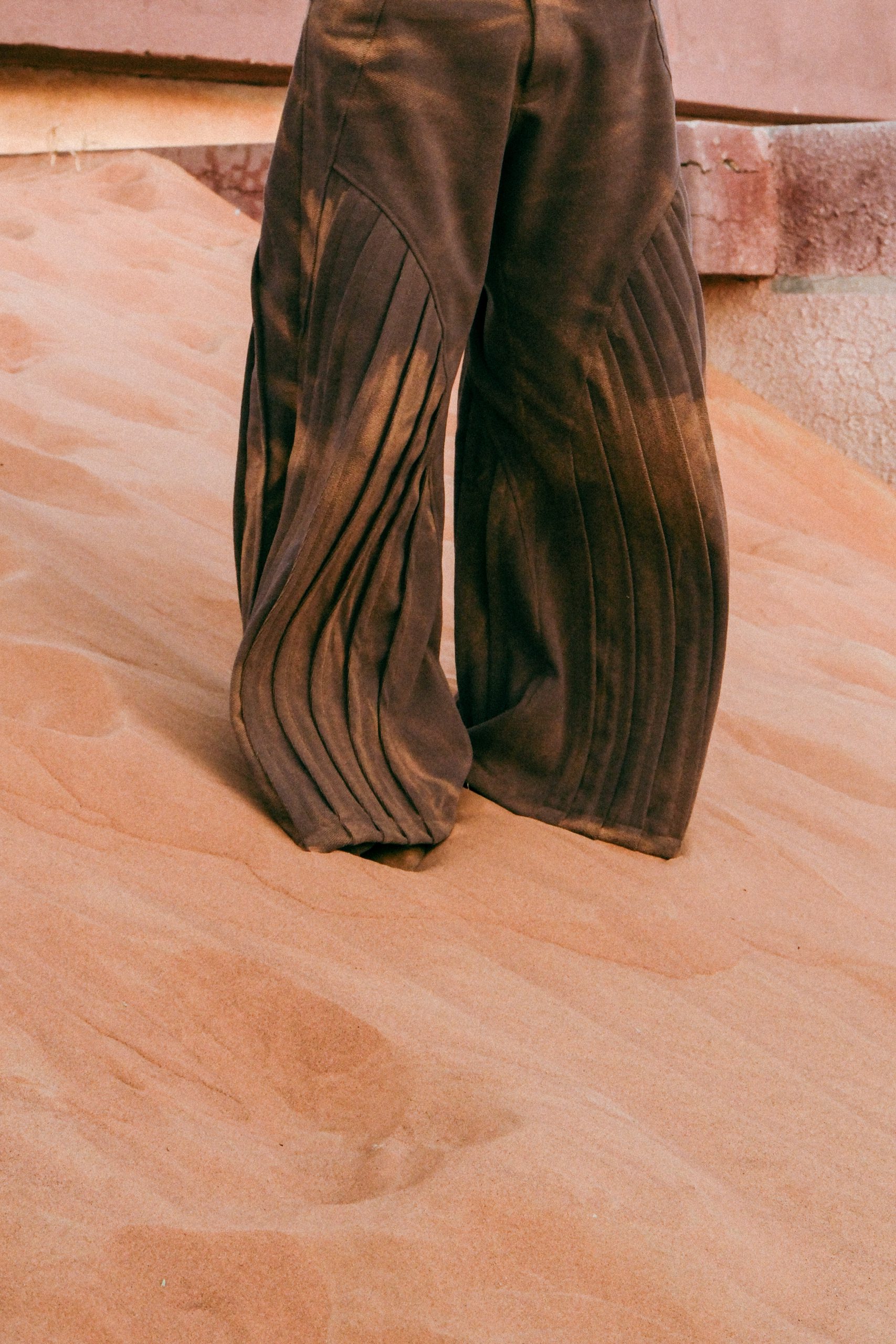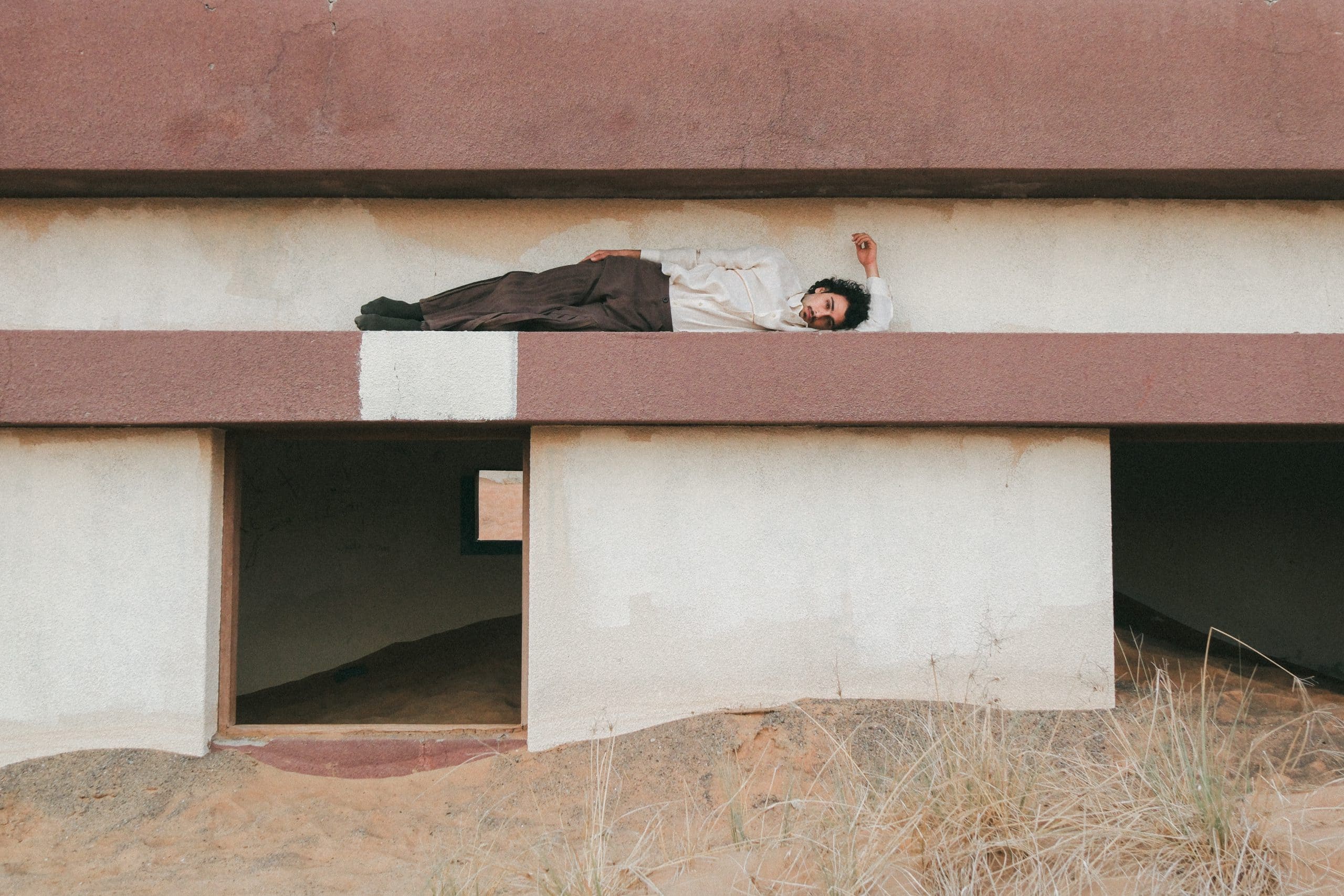“Absent Findings are those moments when you’re expected to be somewhere, doing something specific, but instead, you choose to be elsewhere—immersed in experiences that deeply resonate with your inner self. These are the moments that expand your palette of references and uncover ideas that fuel more authentic, human stories. These moments are Absent Findings.”
Absent Findings, a unisex fashion label that fuses heritage with minimalist elegance, it’s exactly where these concepts converge. Debuting in April of 2025, with My Personal References, a collection drawing from the mind and heart of founder and designer Shivin Singh’s personal archive of visual and emotional cues. Referencing the likes of paintings from Vasudeo S. Gaitonde, the shapes and silhouettes were influenced by the architectural works of Le Corbusier—particularly the Palace of Assembly in Chandigarh and the tradition of draping of the sari.
Absent Findings is designed for those who value creativity over conformity, inviting wearers on an introspective journey, a self-inflicted voyage of discovery with no right or wrong answers; Pushing to explore the fine line between absence and presence while crafting garments for a community that favors individuality and curiosity. A mind-set that is reflective of those who seek substance in subtlety.
Nisha Kapitzki: What moment in your life sparked the idea for Absent Findings? Was there a particular event or conversation that led to its creation?
Shivin Singh: I found the confidence to create the brand during my time at Gucci in early 2023, after graduating from Polimoda. The idea had been circling for a while, but being surrounded by incredible craftsmanship—and still feeling a lack of true representation—made it clear that Absent Findings wasn’t just personal. It echoed something many young artists felt: a sense of not fitting the mold, but searching for something more real. Especially in how South Asian beauty and culture were being portrayed—often surface-level—I saw a need for something more intimate, layered, and honest. That’s when the idea became something I had to build.
NK: What does the name Absent Findings mean and as a whole, what does it represent?
SS: Absent Findings is about quietly stepping away from what’s expected—driven by instinct, not announcement. It’s about those in-between moments when you’re not where you’re “meant” to be, but exactly where you need to be. It’s a small, personal idea that shapes everything: the quiet obsessions, unseen references, and stories built from real emotion, not strategy. It’s not a concept or campaign—just a feeling.
NK: How does the concept of “absence” or “finding” manifest in your work—not just in name, but in texture, shapes or narrative?
SS: “Absence” and “finding” shape my work in quiet but intentional ways. I focus on rethinking classic garments—not just to be different, but to question what truly needs to be there. One piece, for example, looks like a classic Oxford shirt, but the side seams are gone—replaced by heirloom sari piping from my family. What seems decorative is actually structural. Nothing is there just to look good; it all has meaning. I also avoided using new fabric—everything is made from deadstock or old saris. Absence shows up in what’s removed or rejected, and the findings come through when you look closer and see what’s been revealed instead.
NK: Could you walk us through your design process, from concept to final piece? How do you ensure each garment resonates with the brand’s identity?
SS: My design process is streamlined—probably thanks to my slight OCD. Everything in my studio is labeled and intentional; every piece needs a reason to exist. It usually starts with something small—a painting, a song, a sentence—that shifts my perspective. That shift pulls me into another world, and I respond emotionally, through my own memories and references. It becomes a personal dialogue.
For this collection, I was drawn to Vasudeo S. Gaitonde’s No. 6 (1962), which I saw in New Delhi. Its stillness and depth echoed the tones of my childhood in Dubai—memories I didn’t realize I’d held onto. At the same time, Le Corbusier’s Palace of Assembly in Chandigarh—where my parents studied—offered a new way of thinking about shape and structure through its brutalist use of space and shadow.
Bitches Brew by Miles Davis was on repeat while I designed—the balance of chaos and control shaped the rhythm and styling of the collection. In the background was the surreal logic of dreams, where colors shift in ways that don’t always make sense but still feel right. That mood influenced the tones and emotional atmosphere.
The drape of the sari was another key reference. My mother is Bengali, and the sari—both precise and free—has always felt like the most powerful form of dress. That tension between structure and fluidity runs through the entire collection.
The prototyping phase was long and meticulous—each garment went through about 2.5 prototypes before it became a sample. I focused on perfecting the cut, finish, tailoring, and movement, leaving nothing unresolved.
The process reflects the brand: guided by instinct, memory, and quiet rigor, always returning to the initial feeling that sparked it.
NK: The textures and fabrics in your designs seem intentional. Can you share the significance behind your material choices and how they relate to the stories you wish to tell?
SS: At Absent Findings, material choice is deeply personal. We work with deadstock fabrics, combining them with heirloom saris—particularly in one-of-one silk blouses. From my Bengali family, I’ve seen women hold onto saris, only wearing them once before saving them for a special occasion. I’ve always believed that if you love a piece, it should be worn often, not kept hidden. This mindset extends to our use of deadstock fabrics. It’s not just about sustainability, but about giving new life to materials that already carry meaning. Every texture and color must strike a balance between history and possibility, so the garments can be worn repeatedly, carrying a kind of love that feels real and personal.
NK: Many of your pieces feature subtle, intentional details. Is there a hidden motif or symbol that most people might overlook but has deep meaning?
SS: Yes, the motif of the curved, repeating line appears throughout the collection, often as subtle pipings or quilting. It’s a personal reference, drawing from the drape of a sari, wind patterns on desert sand, and the textures of seashells.
Seashells, in particular, have stayed with me for their beauty and their duality—they’re both delicate and protective. This idea of clothing as something that shields or grounds you runs through the work. Those lines aren’t just decorative; they carry memory, intention, and quiet resilience, hidden but always present.
NK: How has your understanding of your own heritage evolved through the process of building this brand?
SS: My heritage as an Indian person growing up in the UAE has always been there—it’s
shaped so much of how I see and feel. My father is Punjabi, my mother is Bengali, and I grew up hearing both languages at home, absorbing two very different, very rich cultures. Growing up, I downplayed my heritage to fit in, but building Absent Findings changed that. I now see it as a rich source of inspiration—something I draw from to create more honest, human work. My cultural background now influences my designs, both metaphorically and literally.
We’ve created one-of-one pieces from heirloom saris—traditional garments that carry family
stories—and reshaped them into unisex blouses that feel contemporary, alive, and open. It’s not about preserving something in its original form. It’s about letting it evolve, through my lens, into something that feels just as meaningful today.
NK: What’s a piece from your collection that taught you the most—either technically or emotionally?
SS: Working with the heirloom silk saris taught me the most—both technically and
emotionally. These were saris I’d seen my mother wear just a handful of times, and a few that belonged to my grandmother. There’s a certain weight that comes with cutting into fabric like that—something so delicate, but also loaded with memory.
Creating the one-of-one silk sari blouses from those pieces was probably the most challenging part of the process. The fabrics—mostly silk chiffon—are incredibly difficult to sew. They shift, they stretch, they resist structure in a way that forces you to be more patient, more exacting. But that challenge became part of the beauty. The blouses carry quiet power—fluid, soft, feminine, yet deeply personal. Their connection with others makes the emotional and technical effort feel completely worthwhile.
NK: What are some non-fashion influences that play into your creative process?
SS: Most of my influences are non-fashion. While I stay aware of fashion, I keep my inspiration separate. That said, I admire Nicolas Ghesquière’s Balenciaga era and Raf Simons, who inspired me to become a designer. Watching his early shows, I felt a powerful emotion and envy, wanting to embody that attitude and presence.
But when it comes to creating for Absent Findings, I try not to pull from fashion directly. I keep that part of my process very separate. My references tend to come from elsewhere—always from art first. The works of Francis Bacon, Max Ernst, Enrico Prampolini, Vasudeo S. Gaitonde…they form the core of my visual language.
I’m influenced by filmmakers like Kubrick, Jarmusch, Lynch, and Ray, and musically by Radiohead, Kendrick Lamar, Joy Division, Nirvana, Nick Drake, Elliott Smith, and Miles Davis. This is the creative bubble I draw from as I think about what’s next for Absent Findings. I carefully choose what I absorb—whether philosophy, color, or even niche TikTok humor—ensuring it’s something I’d proudly reference later. It all contributes to creating a brand world that feels specific and alive.
NK: What is something “unseen” about Absent Findings that you think defines it most?
SS: The heart of Absent Findings is that quiet moment when someone tries on a piece and I can see they understand the care and story behind it—often in the smallest gestures. It’s not about the brand or fashion, but how it makes them feel: grounded, powerful, and confident. Absent Findings is intimate, meant for the wearer to feel like they can take on the world.
*This interview has been edited and condensed for clarity*
